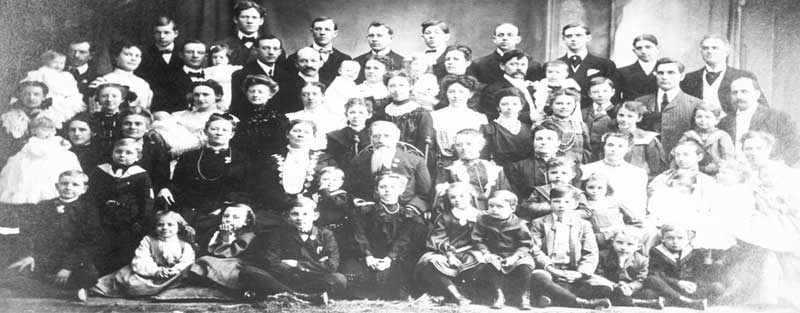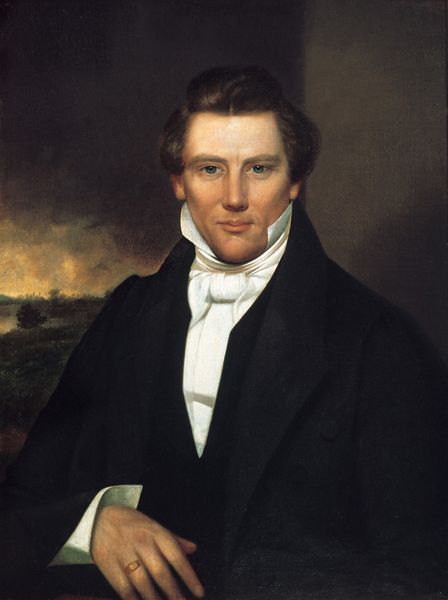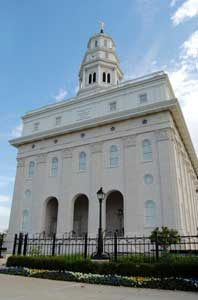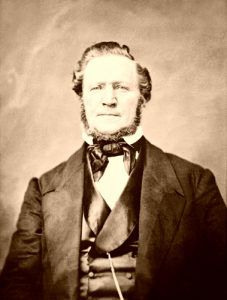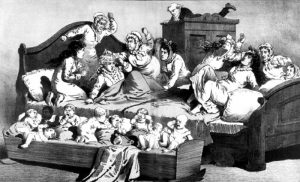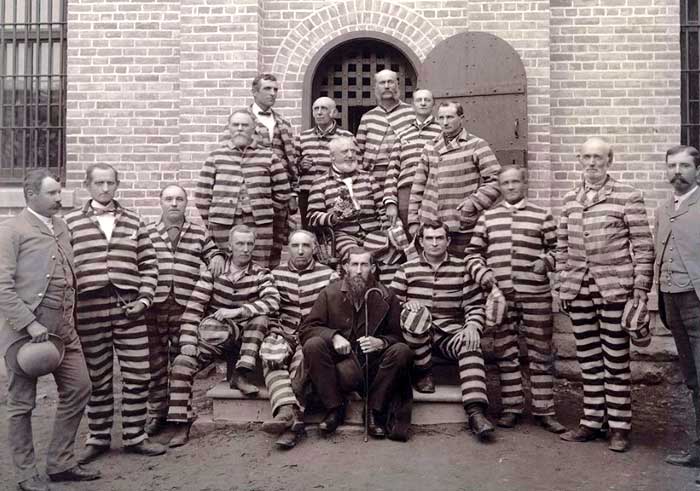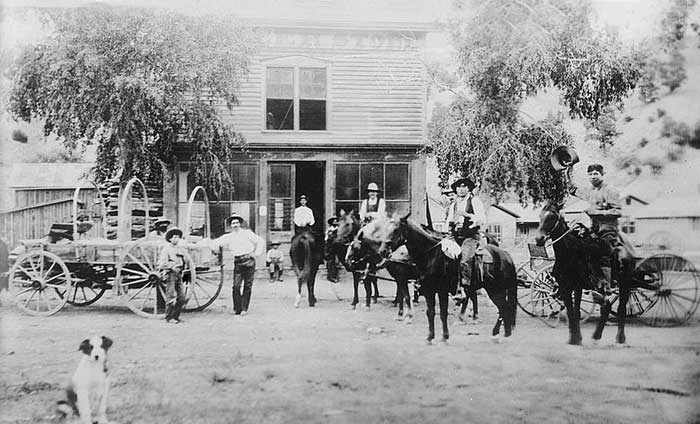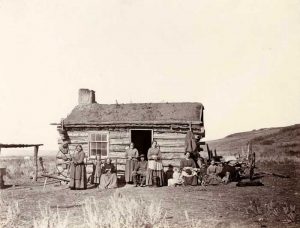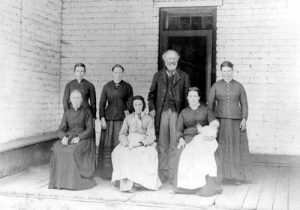Polygamy was practiced by leaders of The Church of Jesus Christ of Latter-day Saints (Mormons) for more than half of the 19th century in semi-secrecy and practiced publicly from 1852 to 1890 by up to 30 percent of church families.
Joseph Smith of New York founded the Mormon Church in 1830 after having experienced a series of visions, one of which directed him to ancient hidden golden tablets inscribed with a Judeo-Christian history of an ancient American civilization. In 1830, he completed an English translation of these plates called the Book of Mormon and formed the church. The Book of Mormon and his revelations then became fundamental tenets of the Mormon Church. One of these tenets was polygamy, which his contemporaries said came from an angel having commanded Smith to marry plural wives.
Called plural marriage by Mormons in the 19th century, polygamy began in Nauvoo, Illinois, where Joseph Smith established the religious practice in the early 1840s. At that time, he allegedly received a revelation in 1843 that living “the principle of plural or celestial marriage” in this life was a prerequisite to receiving the fullness of God’s celestial glory in the next.
However, many early converts to the religion, including Brigham Young, Orson Pratt, and Lyman Johnson, recorded that Smith was teaching plural marriage privately as early as 1831 or 1832. Johnson claimed to have heard the doctrine from Smith in 1831, and Mosiah Hancock reported that his father was taught about plural marriage in the spring of 1832. Orson Pratt reported that Smith told some early members in 1831 and 1832 that plural marriage was a true principle but that the time to practice it had not yet come.
While polygamy is believed to have been practiced by Smith and a handful of church leaders since its inception, church records, and publications reflect that he publicly condemned and denied his involvement, and participants were excommunicated. However, in July 1843, Smith told a gathering of his closest followers that he wanted the church to return to polygamous marriage practices like those of Biblical patriarchs Abraham, Isaac, and Jacob.
William Clayton, Smith’s scribe, recorded one marriage, stating:
“On May 1, 1843, I officiated in the office of an Elder by marrying Lucy Walker to the Prophet Joseph Smith at his own residence. During this period, the Prophet Joseph took several other wives. Amongst the number, I well remember Eliza Partridge, Emily Partridge, Sarah Ann Whitney, Helen Kimball, and Flora Woodworth. These all, he acknowledged to me, were his lawful, wedded wives, according to the celestial order. His wife Emma was cognizant of the fact of some, if not all, of these being his wives, and she generally treated them very kindly.”
Less than a year later, Joseph Smith and his brother Hyrum were murdered in a jail cell in Carthage, Illinois, on June 27, 1844, while awaiting trial on charges resulting from his promotion of polygamy. He was said to have had as many as 40 wives at his death.
After his death, Joseph’s first wife, Emma, denounced plural marriage, remained in Illinois, and joined the Reorganized Church of Jesus Christ of Latter-day Saints headed by her son, Joseph III, and rejected polygamy.
In the meantime, Brigham Young took over leadership of the Church, and in the late 1840s, he led the Mormons across the United States to settle in Utah. On August 29, 1852, Young publicly announced to the world that the Mormon belief in polygamy was the ideal marriage form in the eyes of God.
“God never introduced the Patriarchal order of marriage with a view to please man in his carnal desires, nor to punish females for anything which they had done; but He introduced it for the express purpose of raising up to His name a royal Priesthood, a peculiar people”
— Brigham Young
During this time, the Mormons encouraged the development of polygamous marriages to bring many spirits into the present world and allow all females to be married. Although polygamy was considered the ideal marriage form, it was only found among the wealthy and higher-level Church leaders.
From its inception, Mormon polygamy resulted in great disapproval among the American public and government authorities. The Republican platform referenced “the twin relics of barbarism — polygamy and slavery.”
For nearly 60 years, the church and the United States were at odds with the Mormons defending the practice as a matter of religious freedom, while the federal government aggressively sought to eradicate it, consistent with prevailing public opinion.
Polygamy was probably a significant factor in the Utah War of 1857 and 1858. In 1862, the United States Congress passed the Morrill Anti-Bigamy Act, which prohibited plural marriage in the territories. However, the Mormons ignored the law and continued to practice marrying multiple wives, believing that it was protected by the First Amendment.
In 1879, in Reynolds v. United States, the Supreme Court of the United States upheld the Morrill Act, stating:
“Laws are made for the government of actions, and while they cannot interfere with mere religious belief and opinion, they may with practices.”
In 1887, the Edmunds-Tucker Bill passed, making non-publicly recorded marriages a felony. As a federal offense, authorities were authorized to seize personal and church assets, and entire families went “underground” to avoid imprisonment. Between 1884 and 1895, there were some 1,400 indictments issued against Mormons, and hundreds were sentenced to prison. During this time, Mormon men were stereotyped as fanatics who exploited innocent converts to satisfy their “sexual degeneracy” and mobs in the American South attacked Mormon missionaries. Many church leaders went into hiding, and large numbers moved to Colorado, Wyoming, Arizona, Canada, and Mexico.
By some accounts, many of the Mormons who went to Mexico in the late 19th and early 20th century were not emigrating in defiance of church leaders’ efforts to end the practice of polygamy. Instead, these colonies were established by church leaders as a refuge where polygamous families could live free of prosecution. Over the years, immigration to Mexico included several thousand people.
In 1890, when it became clear that Utah would not be admitted to the Union while polygamy was still practiced, church president Wilford Woodruff issued a Manifesto that officially terminated the practice of polygamy. Utah was admitted as a state in 1896.
After the Manifesto, some Mormons continued to enter into polygamous marriages. These eventually stopped in 1904 when church president Joseph F. Smith (nephew of the founding prophet Joseph Smith) disavowed polygamy before Congress and issued a “Second Manifesto” that called for all plural marriages to cease and established ex-communication as a consequence for those who disobeyed. This manifesto occurred after Senate hearings opened in January 1904, with Smith attempting to redress the church’s damaged reputation. Ironically, Joseph F. Smith had six wives and fathered 48 children.
Afterward, President Smith traveled to the Mormon colonies in Mexico to reinforce the Manifesto, stating:
“There are no plural marriages being performed at present in the Church, in Mexico or anywhere else… The Church is upon trial before the Government of the United States, and we must be very careful.”
Though the Mexican colonists who married into polygamy before 1904 continued to live openly as plural families, no more marriages were to occur. However, the Mexican Revolution of 1910-20 eroded their ability to live together in cohesive family units and forced most Mormon colonists to flee north to the United States. In 1912 some 4,500 Mormon colonists, which included Utah Senator Mitt Romney’s five-year-old father, George, fled their homes in a mass exodus.
In the following years, several small “fundamentalist” groups, seeking to continue the practice, split from the main church and formed their churches. Though the people of these groups were excommunicated from the mainstream Latter Day Saints Church, many of these fundamentalist communities continue to survive.
Today, though members of the main Latter Day Saints Church do not practice polygamy and actively seek to distance themselves from fundamentalist groups that continue the practice, the revelation still appears in section 132 of the Doctrine and Covenants considered canonized scripture.
© Kathy Alexander/Legends of America, updated March 2023.
Also See:
Joseph Smith, Jr. – Founder of the Mormon Church
Brigham Young – Leading the Mormons
Sources:
The Conversation
Digital Commons
Public Broadcasting Service
Religion News
Wikipedia

